Swallows And Swifts
How To Tell Similar Birds Apart
A Read-Along Activity
Can you tell the difference between swallows and swifts? And what about house martins and sand martins? And are swallows really the weather forecasters of the bird world?
These four birds are all migratory birds (that means they move from one place to another according to the seasons) and they travel to Britain for the Summer. So they should be arriving round about now. You will have to keep a good look-out for them. But what will you be looking for? How can you tell them all apart?
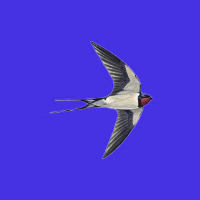
The teddy bears are already on watch for these arrivals and have a bit of a competition on to be the first bear to see one of these birds. The bears can be found looking out the windows (if the weather is bad), or out in the garden (when it's sunnier) with their binoculars and cameras, trying to be the first to spot one of these visiting birds.
So, what things can you look out for that will tell you which of the birds you are seeing? Firstly, swifts will be looking for nesting sites from late May to late July. Keep a look out around dusk on a warm, still evening, or early in the morning. Swifts fly very high in the sky and extremely fast, so they are difficult to spot.
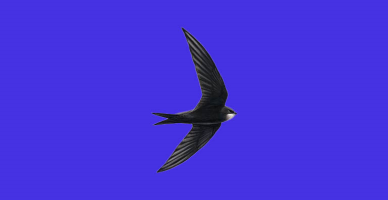
One very surprising thing about them is that they hardly ever stop flying - they sleep, drink, and eat on the wing; they don't land anywhere or come very near to the ground. The teddy bears say that they get very stiff necks trying to look up all the time to spot a swift! The only time a swift stops flying is when it nests, usually in a hole in a building or roof which they fly into at speed, folding their wings in at the last second. The birds are a sooty brown colour with a crescent-shaped wingspan and a short forked tail and they make a piercing, high-pitched "scream".
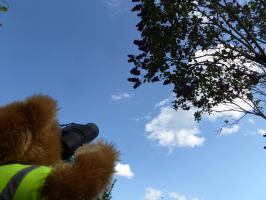
Swallows, on the other hand, dart and glide about in the air, often low to the ground or at treetop height. They often tweet and chirrup from their perches, usually on telephone wires. They, too, like nooks and crannies in old buildings or barns, and build themselves a cup-shaped nest out of mud. They have a distinctive long, forked tail with tail streamers and have a red throat, white underside and a blueish sheen to their heads and backs, so more colourful to spot.
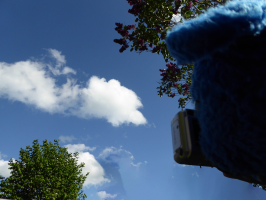
House martins are smaller and have shorter wings than swifts or swallows although they do have a similar forked tail. They have a pure white underside with blue-black upper parts. Just like swallows, house martins collect mud to build cup-shaped nests but they build them outside buildings rather than inside. They nest in colonies, which can amount to dozens of birds in the same place. They are most active in mornings and evenings and zoom around at mid-height, usually in flocks, coming down low over water and fluttering in and out of house eaves, chirruping softly.
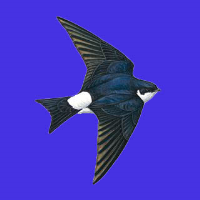
Sand martins are similar to their cousin, the house martin. They are the smallest of these four birds. They are dark brown except for a white underside divided by a brown bar across the chest. They tend to swirl and flap rather than glide. They mainly fly over water, but will also perch on overhead wires or branches. These birds burrow holes into sandy or dry earth banks in sea-cliffs, railway cuttings, gravel pits or high riverbanks, although sometimes they will take advantage of drainpipes poking out of walls and holes in brickwork!
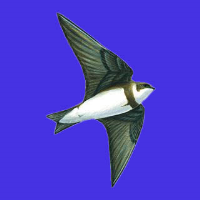
There is an old saying about how swallows can predict the weather. "Swallows high, weather dry." And although it isn't a forecast for endless days of sunshine, it is usually correct for the current day. Swallows fly high in warm weather because all the insects that they eat will fly high too. Only when the weather is cool and overcast do the insects fly low down and the swallows will swoop down too. So keep a look out to check if that saying is true. Happy bird-watching!